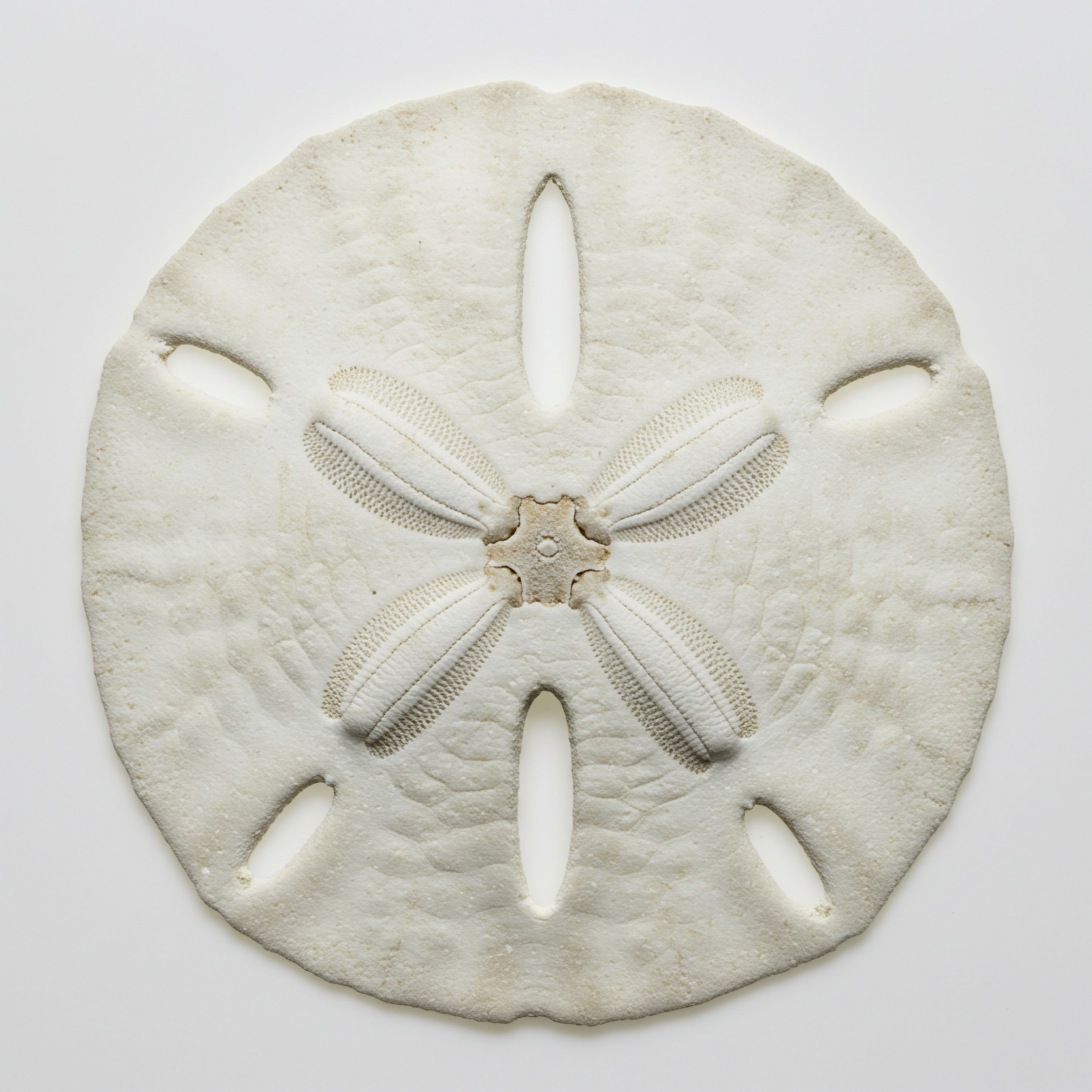

Fundamentals
You may have noticed a subtle shift in your body’s internal landscape. A feeling of diminished energy that sleep doesn’t seem to fix, a change in physical resilience, or a sense that your internal engine isn’t running with its former efficiency. These experiences are valid and often point toward the intricate communication network that governs your body’s functions, the endocrine system. The heart, your biological center of power and endurance, is profoundly attuned to this network.
Its every beat, the force of each contraction, and its ability to repair and maintain itself are directly tied to the chemical messengers we call hormones. Understanding how these signals influence your heart muscle is the first step in comprehending your own physiology and reclaiming your functional vitality.
The heart is composed of specialized muscle cells known as cardiomyocytes. These are the tireless workers that contract and relax in a perfect rhythm, pumping blood, oxygen, and nutrients to every cell in your body. Each cardiomyocyte Meaning ∞ A cardiomyocyte is a highly specialized muscle cell responsible for the contractile force of the heart, facilitating the continuous pumping of blood throughout the circulatory system. is a powerhouse, packed with mitochondria that generate the vast amounts of chemical energy, or adenosine triphosphate (ATP), required for this continuous work. Hormones act as the master regulators of this entire process.
They are signaling molecules that travel through the bloodstream and bind to specific receptors on or inside these heart muscle cells, issuing direct commands that alter their behavior. This is a direct, cell-to-cell communication system that dictates cardiac performance from one moment to the next.
Hormones serve as direct chemical instructions that modulate the energy production, contraction strength, and structural health of individual heart muscle cells.

The Core Regulators of Cardiac Vigor
While a multitude of hormones interact with the cardiovascular system, a few key players have a particularly direct and powerful influence on the heart muscle itself. Their balance is essential for maintaining the heart’s structural integrity Peptide modifications extend therapeutic action, yet require careful long-term safety assessment for immune responses and systemic effects. and its functional output. When these hormonal signals become dysregulated, either through deficiency or excess, the heart muscle’s ability to perform its duties can be compromised, leading to the symptoms of fatigue and reduced capacity that many people experience.
Thyroid hormones, for instance, function as the primary metabolic thermostat for every cell in your body, including cardiomyocytes. They directly control the rate at which your heart cells produce and use energy. An optimal level of thyroid hormone Meaning ∞ Thyroid hormones, primarily thyroxine (T4) and triiodothyronine (T3), are iodine-containing hormones produced by the thyroid gland, serving as essential regulators of metabolism and physiological function across virtually all body systems. ensures your heart beats at an appropriate rate and with sufficient force to meet your body’s demands. Sex hormones, such as testosterone and estrogen, also play a vital and often underappreciated role.
They are not just for reproduction; they are critical for maintaining muscle mass and function throughout the body, and the heart is no exception. Testosterone, for example, has a direct influence on the cardiomyocyte’s structure and its ability to contract forcefully.

How Hormonal Signals Are Received
Hormones deliver their messages to heart muscle cells Sex hormones directly instruct heart muscle cells on energy production, structural integrity, and contractile force via specific receptors. through two primary mechanisms. Understanding these pathways helps clarify how hormonal shifts can have both immediate and long-term consequences for cardiac function.
- Genomic Signaling ∞ This is a slower, more sustained process. Hormones like thyroid hormone and testosterone can pass through the cell membrane and bind to receptors inside the cardiomyocyte, specifically within the nucleus. This hormone-receptor complex then directly interacts with the cell’s DNA, turning specific genes on or off. This process can alter the very blueprint of the cell, instructing it to build more contractile proteins, more energy-producing mitochondria, or other structural components. This is how hormones shape the heart’s long-term strength and architecture.
- Non-Genomic Signaling ∞ This pathway is rapid, producing effects within seconds or minutes. Some hormones bind to receptors located on the surface of the cardiomyocyte. This binding event triggers a cascade of chemical reactions inside the cell, without directly involving DNA. These rapid signals can instantly modify the cell’s handling of key electrolytes like calcium, which is the direct trigger for muscle contraction. This allows the heart to quickly adjust its contractility and rate in response to immediate needs.
The dual nature of this signaling system means that hormonal imbalances can manifest in multiple ways. A chronic deficiency might slowly degrade the heart’s structural integrity over years, while an acute fluctuation can cause immediate changes in heart rhythm or performance. This intimate connection between your endocrine system and your heart muscle underscores why a sense of systemic wellness is so deeply tied to hormonal health. Your heart’s function is a direct reflection of the clarity and balance of these internal chemical communications.


Intermediate
Building upon the foundational knowledge that hormones are primary regulators of heart muscle, we can examine the specific mechanisms through which these signals operate. The function of a cardiomyocyte is a delicate balance of electrical signaling, calcium dynamics, and energy metabolism. Hormonal imbalances disrupt this equilibrium, directly altering the heart’s mechanical performance. This exploration moves from the general concept of hormonal influence to the precise, tangible effects on cardiac contractility, relaxation, and structure, providing a clearer picture of why personalized hormonal optimization is a key strategy in maintaining cardiovascular health.

How Do Sex Hormones Modulate Cardiac Power?
The sex hormones Meaning ∞ Sex hormones are steroid compounds primarily synthesized in gonads—testes in males, ovaries in females—with minor production in adrenal glands and peripheral tissues. testosterone, estrogen, and progesterone exert profound and distinct effects on the heart muscle. Their decline with age, in both men and women, is a significant contributor to changes in cardiovascular function. Restoring balance through carefully managed therapeutic protocols can directly address these underlying cellular deficits.

Testosterone the Architect of Contractile Strength
Testosterone’s role in the heart extends far beyond its androgenic identity. Cardiomyocytes are equipped with androgen receptors, allowing testosterone to exert direct influence. Its primary effects are on the very machinery of muscle contraction. One of its most significant actions is the modulation of calcium channels.
Testosterone has been shown to influence L-type calcium channels, which are critical for initiating the process of excitation-contraction coupling—the sequence of events that translates an electrical impulse into a physical muscle contraction. By regulating calcium influx, testosterone directly impacts the force and speed of each heartbeat.
For men experiencing the symptoms of andropause, or low testosterone, this cellular mechanism can manifest as reduced exercise capacity and a general feeling of cardiac inefficiency. Testosterone Replacement Therapy (TRT) in these cases is a form of biochemical recalibration. A standard protocol might involve weekly intramuscular injections of Testosterone Cypionate. This is often paired with subcutaneous injections of Gonadorelin, which helps maintain the body’s own hormonal signaling pathways from the pituitary gland, preserving testicular function.
To manage potential side effects from the conversion of testosterone to estrogen, an aromatase inhibitor like Anastrozole Meaning ∞ Anastrozole is a potent, selective non-steroidal aromatase inhibitor. is typically included. This multi-faceted approach seeks to restore the hormonal environment in which cardiomyocytes are designed to function optimally.

Estrogen and Progesterone the Guardians of Vascular Health
In women, estrogen is a powerful cardiovascular protector before menopause. Its benefits are widespread, impacting everything from cholesterol profiles to the health of the blood vessels that supply the heart. Estrogen promotes vasodilation, relaxing blood vessels to ensure robust blood flow to the cardiac muscle.
It achieves this by stimulating the production of nitric oxide, a potent vasodilator, within the endothelial cells lining the arteries. When estrogen levels decline during perimenopause and post-menopause, this protective effect wanes, contributing to an increased risk of cardiovascular events.
Hormonal support for women is tailored to their specific menopausal status. For many, this involves a combination of estrogen and progesterone. Progesterone is important for balancing the effects of estrogen and has its own cardiovascular benefits, including a mild diuretic effect that can help manage blood pressure. In some cases, low-dose testosterone therapy is also introduced for women, administered as a weekly subcutaneous injection.
This protocol acknowledges that testosterone is also a vital hormone for female health, contributing to libido, energy, and muscle function, including that of the heart. The goal of these protocols is to ease the physiological transition of menopause, mitigating the loss of hormonal signals that maintain cardiovascular resilience.
The decline of sex hormones with age directly correlates with measurable changes in the heart’s contractile ability and vascular support systems.

Thyroid Hormone the Pacesetter of Cardiac Metabolism
Thyroid hormones are perhaps the most powerful regulators of myocardial contractility Meaning ∞ Myocardial contractility refers to the intrinsic ability of the heart muscle cells, known as cardiomyocytes, to generate force and shorten, thereby ejecting blood into the circulation. and heart rate. Both an excess (hyperthyroidism) and a deficiency (hypothyroidism) of thyroid hormone have immediate and significant consequences for heart muscle function. The active form, triiodothyronine (T3), acts directly on the cardiomyocyte nucleus to control the expression of genes that are fundamental to cardiac performance.
The table below outlines the contrasting effects of thyroid hormone imbalance on key cardiac parameters.
| Cardiac Parameter | Hypothyroidism (Deficiency) | Hyperthyroidism (Excess) |
|---|---|---|
| Heart Rate (Chronotropy) | Decreased (Bradycardia) | Increased (Tachycardia) |
| Contractility (Inotropy) | Decreased (Weaker Contractions) | Increased (Forceful Contractions) |
| Relaxation (Lusitropy) | Impaired (Slower Relaxation) | Enhanced (Faster Relaxation) |
| Cardiac Output | Reduced | Increased (Can lead to “high-output” failure) |
| Systemic Vascular Resistance | Increased | Decreased |
One of the most critical genes regulated by T3 is the one that codes for the sarcoplasmic reticulum Meaning ∞ The Sarcoplasmic Reticulum, or SR, is a specialized intracellular membrane network within muscle cells, serving as the primary reservoir for calcium ions. Ca2+-ATPase (SERCA2a). This protein is an ion pump that actively removes calcium from the cardiomyocyte’s cytoplasm after each contraction, allowing the muscle to relax. T3 upregulates SERCA2a, which leads to faster calcium removal and therefore quicker relaxation (a positive lusitropic effect). This allows the heart to fill more efficiently between beats, especially at higher heart rates.
In hypothyroidism, SERCA2a Meaning ∞ SERCA2a is an isoform of the Sarcoplasmic/Endoplasmic Reticulum Calcium ATPase, a protein responsible for actively transporting calcium ions from the cytosol into the sarcoplasmic or endoplasmic reticulum lumen. activity is reduced, leading to impaired relaxation and diastolic dysfunction. Conversely, in hyperthyroidism, the overstimulation of these mechanisms can lead to arrhythmias and place an unsustainable workload on the heart. The precise balance of thyroid hormone is therefore a prerequisite for healthy, efficient cardiac cycling.


Academic
A sophisticated analysis of hormonal influence on heart muscle function requires a systems-biology perspective, integrating endocrinology with cellular electrophysiology and molecular biology. Hormonal imbalances are not isolated events; they are perturbations within complex, interconnected feedback loops that have profound downstream effects on cardiomyocyte homeostasis. The academic inquiry moves beyond cataloging individual hormonal effects to understanding the integrated molecular pathways that govern cardiac adaptation and maladaptation. This deeper view reveals how hormonal therapies, including advanced peptide protocols, represent a targeted intervention into these precise biological mechanisms.

The Molecular Choreography of Androgens in Cardiomyocytes
Testosterone’s influence on the heart muscle is mediated through a complex interplay of genomic and non-genomic signaling, leading to significant alterations in cellular architecture and function. At the genomic level, testosterone binds to nuclear androgen receptors in cardiomyocytes, acting as a transcription factor to regulate a suite of genes involved in protein synthesis and cellular structure. This mechanism is responsible for inducing a state of physiological hypertrophy, characterized by an increase in the size of cardiomyocytes without the accompanying fibrosis or cell death seen in pathological conditions. It is a healthy adaptation to demand.
Supraphysiological doses of anabolic-androgenic steroids (AAS), however, overwhelm this system. The excessive androgenic signaling can trigger a shift towards pathological hypertrophy. This state is characterized by not only cell growth but also increased deposition of collagen in the spaces between muscle cells, leading to myocardial fibrosis.
This stiffens the heart wall, impairs its ability to relax and fill with blood (diastolic dysfunction), and can eventually lead to systolic dysfunction and heart failure. Studies have demonstrated that long-term AAS use is associated with a significant reduction in left ventricular ejection fraction and impaired diastolic function, highlighting the dose-dependent nature of androgen effects on the heart.
The table below contrasts the features of physiological versus pathological cardiac hypertrophy, a distinction that is heavily influenced by hormonal balance.
| Feature | Physiological Hypertrophy (e.g. in an athlete) | Pathological Hypertrophy (e.g. from AAS abuse) |
|---|---|---|
| Primary Stimulus | Exercise, balanced hormonal signals | Pressure overload, excessive hormonal signaling |
| Cardiomyocyte Size | Increased | Increased |
| Interstitial Fibrosis | Absent or minimal | Present and often extensive |
| Capillary Density | Normal or increased | Decreased (relative to muscle mass) |
| Cardiac Function | Normal or enhanced | Initially preserved, then declines (diastolic/systolic dysfunction) |
| Reversibility | Generally reversible | Partially or irreversible |

Growth Hormone Axis and Peptide Therapies a New Frontier in Cardiac Repair
The growth hormone Meaning ∞ Growth hormone, or somatotropin, is a peptide hormone synthesized by the anterior pituitary gland, essential for stimulating cellular reproduction, regeneration, and somatic growth. (GH) and insulin-like growth factor-1 (IGF-1) axis represents another critical regulatory system for cardiovascular health. GH itself has direct effects on the heart, but much of its influence is mediated through IGF-1, which is produced primarily in the liver in response to GH stimulation. Both GH and IGF-1 receptors are present on cardiomyocytes, and their activation promotes cell survival, protein synthesis, and has positive inotropic effects. GH deficiency is associated with reduced cardiac mass and impaired pump function, conditions which can be improved with GH replacement therapy.
Peptide therapies represent a more nuanced approach to modulating this axis. Instead of administering GH directly, specific peptides known as GH secretagogues are used to stimulate the pituitary gland’s own production of GH in a more natural, pulsatile manner. This approach avoids the risks associated with continuously elevated GH levels.

What Are the Mechanisms of Key Peptides?
Different peptides work through distinct mechanisms to support cardiac health, making them a highly targeted therapeutic tool.
- Sermorelin, Ipamorelin / CJC-1295 ∞ These peptides are Growth Hormone-Releasing Hormone (GHRH) analogs or mimetics. They bind to GHRH receptors in the pituitary to stimulate the synthesis and release of GH. Ipamorelin is particularly selective, having little to no effect on other hormones like cortisol or prolactin. The combination of Ipamorelin with CJC-1295 provides a sustained, synergistic release of GH, which can improve cardiac output and support the heart’s structural integrity over time.
- Hexarelin ∞ This peptide is a GHRP (Growth Hormone-Releasing Peptide) that acts on a different receptor, the ghrelin receptor (also known as the GHS-R1a). Intriguingly, these receptors are found in high density in the cardiovascular system, including the heart muscle itself. This means Hexarelin has direct, GH-independent cardioprotective effects. It has been shown in preclinical studies to protect cardiomyocytes from ischemia-reperfusion injury, reduce apoptosis (programmed cell death), and limit the extent of myocardial damage after a heart attack.
- PT-141 (Bremelanotide) ∞ While primarily known for its effects on sexual health through melanocortin receptor activation in the brain, the broader melanocortin system has anti-inflammatory and cytoprotective roles that are an area of active research in cardiovascular disease.
These advanced protocols demonstrate a shift toward highly specific interventions. By targeting the precise signaling pathways that govern cardiomyocyte health, it becomes possible to address the root causes of cardiac dysfunction that stem from hormonal decline. This systems-based approach, which recognizes the heart as an endocrine target organ, is the future of proactive and personalized cardiovascular wellness.
Targeted peptide therapies can restore natural hormonal pulses, offering a sophisticated method for supporting cardiac structure and protecting against cellular stress.
The intricate web of hormonal controls means that a decline in one area, such as the HPG axis with testosterone, can have cascading effects that are compounded by age-related changes in other systems, like the GH/IGF-1 axis. A comprehensive clinical strategy therefore assesses the entire endocrine profile to identify and correct the specific imbalances that are compromising the heart’s cellular machinery. This is the essence of translating complex clinical science into a protocol for sustained human vitality.

References
- Mendelsohn, Michael E. and Richard H. Karas. “The protective effects of estrogen on the cardiovascular system.” New England Journal of Medicine, vol. 340, no. 23, 1999, pp. 1801-1811.
- Klein, Irwin, and Kaie Ojamaa. “Thyroid hormone and the cardiovascular system.” New England Journal of Medicine, vol. 344, no. 7, 2001, pp. 501-509.
- Baggish, Aaron L. et al. “Cardiovascular toxicity of illicit anabolic-androgenic steroid use.” Circulation, vol. 135, no. 21, 2017, pp. 1991-2002.
- Sattler, F. R. et al. “Testosterone and growth hormone improve body composition and muscle performance in older men.” Journal of Clinical Endocrinology & Metabolism, vol. 94, no. 6, 2009, pp. 1991-2001.
- Lin, C. and P. C. Lin. “Testosterone and the heart.” Journal of Clinical Endocrinology & Metabolism, vol. 96, no. 1, 2011, pp. 11-20.
- Colao, Annamaria, et al. “The growth hormone-IGF-I axis and the cardiovascular system ∞ clinical implications.” Clinical Endocrinology, vol. 65, no. 2, 2006, pp. 137-145.
- Rasmussen, M. H. et al. “Cardiovascular risk in patients with growth hormone deficiency ∞ effects of 12 months of growth hormone replacement therapy.” European Journal of Endocrinology, vol. 140, no. 5, 1999, pp. 417-424.
- D’Andrea, A. et al. “The effects of anabolic-androgenic steroid abuse on left ventricular diastolic function ∞ a speckle tracking echocardiography study.” International Journal of Cardiology, vol. 152, no. 2, 2011, pp. 248-254.
- Pugh, P. J. et al. “Testosterone treatment for men with chronic heart failure.” Heart, vol. 90, no. 4, 2004, pp. 446-447.
- Ojamaa, Kaie. “Thyroid hormone and the heart.” Heart & Metabolism, no. 32, 2006, pp. 10-14.

Reflection

Charting Your Biological Course
The information presented here offers a map of the intricate connections between your internal chemistry and your cardiac vitality. It details the mechanisms and pathways that define how you feel and function. This knowledge is a powerful tool. It transforms the abstract experience of “not feeling right” into a tangible set of biological questions that can be investigated and addressed.
Your personal health narrative is written in the language of these cellular signals. Learning to read that language, to understand the interplay of your own unique hormonal symphony, is the foundational act of taking true ownership of your well-being. The journey toward optimized health begins with this deep, biological self-awareness. Consider where you are on that journey and what your next step might be in understanding your own systems more clearly.















